Have you become that your internet browser occasionally shows Xml.ppc.buzz, instead of the one you want to see? Then you need to know that your browser has been affected with the obnoxious malicious software from the adware family. The ad-supported software is a part of harmful software that made to display a large amount of annoying advertisements. You need to perform the steps below as soon as possible. It’ll clear your computer from adware that generates a lot of popups in the web-browser and thus delete the redirect to Xml.ppc.buzz web-site.

http://xml.ppc.buzz/search?id= …
It is not a good idea to have an undesired application such as the adware which causes annoying Xml.ppc.buzz pop-up ads. The reason for this is simple, it doing things you do not know about. Even worse, the ad-supported software be able to collect a wide variety of personal info about you which may be later used for marketing purposes. You don’t know if your home address, account names and passwords are safe. And of course you completely don’t know what will happen when you click on any Xml.ppc.buzz pop up advertisements.
The ad-supported software often alter all web browser shortcut files that located on your Desktop to force you visit various intrusive ad pages. As a result, your browser can still redirect you to an unwanted ad web page despite your machine is actually free of ad-supported software and other malicious software.
We strongly advise that you perform the instructions below which will allow you to get rid of Xml.ppc.buzz redirect using the standard features of Windows and some proven free programs.
How to remove Xml.ppc.buzz redirect
There are several steps to deleting the adware that reroutes your web-browser to unwanted Xml.ppc.buzz web page, because it installs itself so deeply into MS Windows. You need to delete all suspicious and unknown programs, then remove malicious extensions from the Firefox, Microsoft Edge, Chrome and IE and other internet browsers you have installed. Finally, you need to reset your web browser settings to remove any changes the ad-supported software has made, and then scan your computer with Zemana, MalwareBytes or AdwCleaner to ensure the adware is fully removed. It will take a while.
To remove Xml.ppc.buzz, use the following steps:
- Delete Xml.ppc.buzz pop ups without any utilities
- Remove potentially unwanted applications through the MS Windows Control Panel
- Remove unwanted Scheduled Tasks
- Clean up the web browsers shortcuts which have been affected by ad supported software
- Remove Xml.ppc.buzz pop-up advertisements from Chrome
- Get rid of Xml.ppc.buzz redirect from Firefox
- Get rid of Xml.ppc.buzz pop-up ads from Internet Explorer
- How to automatically remove Xml.ppc.buzz pop ups
- Use AdBlocker to stop Xml.ppc.buzz and stay safe online
- Prevent Xml.ppc.buzz pop up ads from installing
- Finish words
Delete Xml.ppc.buzz pop ups without any utilities
Read this “How to remove” section to know how to manually remove adware that causes tons of intrusive Xml.ppc.buzz popup advertisements. Even if the step by step guide does not work for you, there are several free malware removers below that can easily handle such adware which developed to redirect your web-browser to various ad web pages like Xml.ppc.buzz.
Remove potentially unwanted applications through the MS Windows Control Panel
First, go to Microsoft Windows Control Panel and delete suspicious programs, all programs you do not remember installing. It’s important to pay the most attention to apps you installed just before Xml.ppc.buzz pop up advertisements appeared on your web-browser. If you don’t know what a program does, look for the answer on the World Wide Web.
Windows 8, 8.1, 10
First, click Windows button

After the ‘Control Panel’ opens, press the ‘Uninstall a program’ link under Programs category like below.

You will see the ‘Uninstall a program’ panel as shown on the image below.

Very carefully look around the entire list of apps installed on your machine. Most probably, one of them is the adware which causes unwanted Xml.ppc.buzz ads. If you’ve many programs installed, you can help simplify the search of harmful apps by sort the list by date of installation. Once you’ve found a questionable, unwanted or unused program, right click to it, after that press ‘Uninstall’.
Windows XP, Vista, 7
First, press ‘Start’ button and select ‘Control Panel’ at right panel as displayed below.

Once the Windows ‘Control Panel’ opens, you need to click ‘Uninstall a program’ under ‘Programs’ as shown on the screen below.

You will see a list of applications installed on your computer. We recommend to sort the list by date of installation to quickly find the software that were installed last. Most probably, it’s the adware that cause annoying Xml.ppc.buzz pop-ups to appear. If you’re in doubt, you can always check the application by doing a search for her name in Google, Yahoo or Bing. Once the program which you need to remove is found, simply press on its name, and then click ‘Uninstall’ as displayed in the following example.

Remove unwanted Scheduled Tasks
If the undesired Xml.ppc.buzz page opens automatically on Windows startup or at equal time intervals, then you need to check the Task Scheduler Library and get rid of all the tasks which have been created by adware.
Press Windows and R keys on your keyboard together. It will show a dialog box that titled with Run. In the text field, type “taskschd.msc” (without the quotes) and click OK. Task Scheduler window opens. In the left-hand side, press “Task Scheduler Library”, as shown on the screen below.
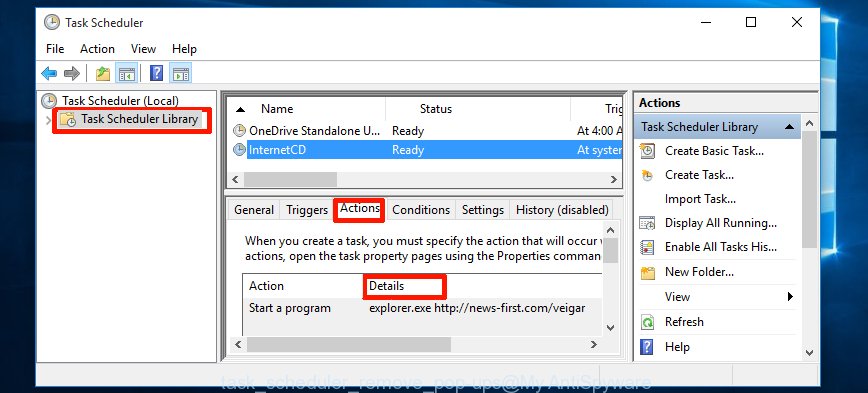
Task scheduler, list of tasks
In the middle part you will see a list of installed tasks. Select the first task, its properties will be display just below automatically. Next, click the Actions tab. Necessary to look at the text which is written under Details. Found something such as “explorer.exe http://site.address” or “chrome.exe http://site.address” or “firefox.exe http://site.address”, then you need remove this task. If you are not sure that executes the task, then google it. If it’s a component of the malicious apps, then this task also should be removed.
Further click on it with the right mouse button and select Delete as displayed in the following example.

Task scheduler, delete a task
Repeat this step, if you have found a few tasks that have been created by unwanted applications. Once is done, close the Task Scheduler window.
Clean up the web browsers shortcuts which have been affected by ad supported software
When the ad-supported software is started, it can also alter the browser’s shortcut files, adding an argument like “http://site.address” into the Target field. Due to this, every time you run the internet browser, it’ll open an undesired web-page.
Right click on the shortcut file of infected web-browser as displayed in the figure below.
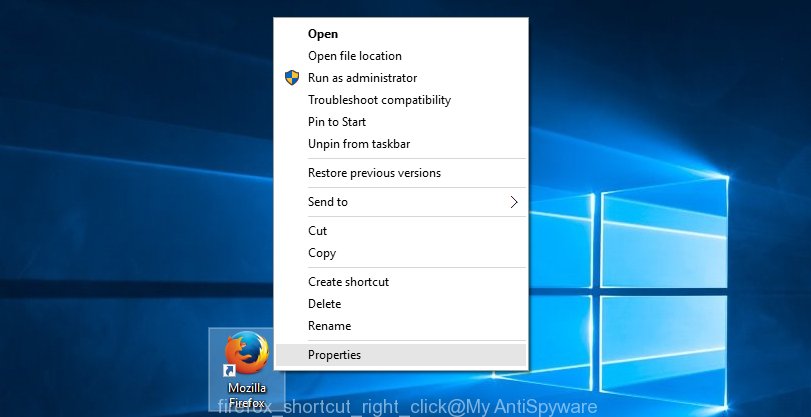
Select the “Properties” option and it will display the shortcut file’s properties. Next, click the “Shortcut” tab and then delete the “http://site.address” string from Target field as displayed below.
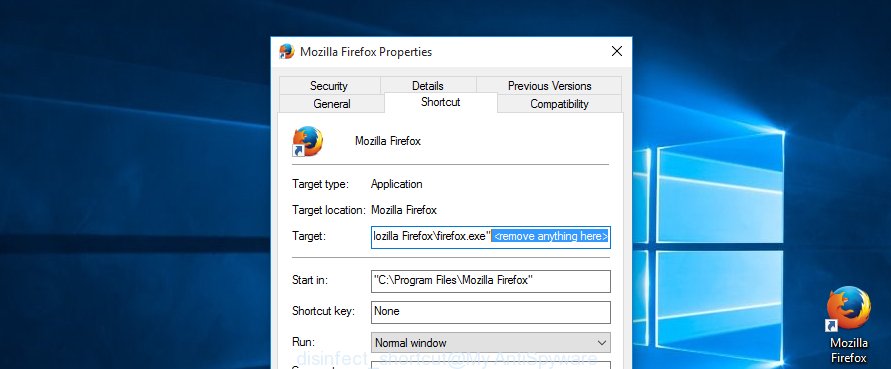
Then click OK to save changes. Repeat the step for all web browsers which are rerouted to the Xml.ppc.buzz unwanted page.
Remove Xml.ppc.buzz pop-up advertisements from Chrome
Reset Google Chrome settings is a simple way to remove the browser hijacker infections, harmful and ‘ad-supported’ extensions, as well as to restore the internet browser’s new tab, start page and search provider by default that have been modified by adware responsible for Xml.ppc.buzz pop-ups.
Open the Chrome menu by clicking on the button in the form of three horizontal dotes (![]() ). It will open the drop-down menu. Select More Tools, then press Extensions.
). It will open the drop-down menu. Select More Tools, then press Extensions.
Carefully browse through the list of installed extensions. If the list has the plugin labeled with “Installed by enterprise policy” or “Installed by your administrator”, then complete the following tutorial: Remove Google Chrome extensions installed by enterprise policy otherwise, just go to the step below.
Open the Google Chrome main menu again, press to “Settings” option.

Scroll down to the bottom of the page and click on the “Advanced” link. Now scroll down until the Reset settings section is visible, as on the image below and click the “Reset settings to their original defaults” button.

Confirm your action, click the “Reset” button.
Get rid of Xml.ppc.buzz redirect from Firefox
If the FF web browser application is hijacked, then resetting its settings can help. The Reset feature is available on all modern version of Firefox. A reset can fix many issues by restoring Firefox settings like search provider by default, new tab and homepage to its default state. It will save your personal information such as saved passwords, bookmarks, and open tabs.
Start the Mozilla Firefox and press the menu button (it looks like three stacked lines) at the top right of the web browser screen. Next, click the question-mark icon at the bottom of the drop-down menu. It will display the slide-out menu.
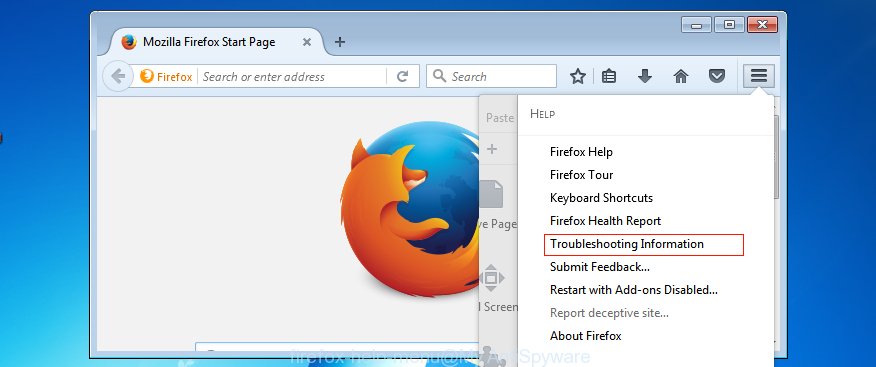
Select the “Troubleshooting information”. If you are unable to access the Help menu, then type “about:support” in your address bar and press Enter. It bring up the “Troubleshooting Information” page as shown on the image below.
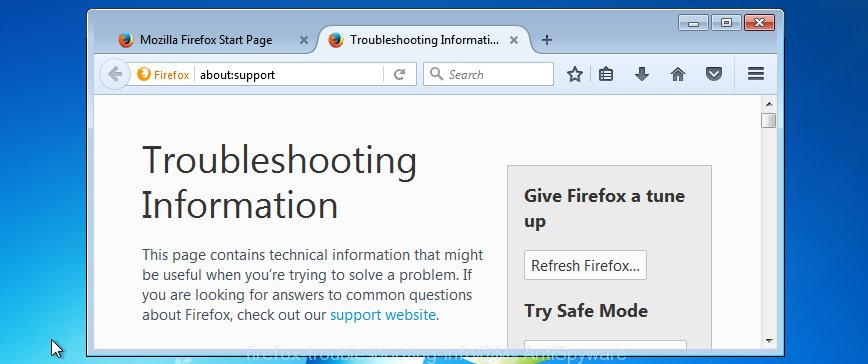
Click the “Refresh Firefox” button at the top right of the Troubleshooting Information page. Select “Refresh Firefox” in the confirmation prompt. The Mozilla Firefox will begin a procedure to fix your problems that caused by the ‘ad supported’ software that causes web browsers to show annoying Xml.ppc.buzz advertisements. After, it’s done, press the “Finish” button.
Get rid of Xml.ppc.buzz pop-up ads from Internet Explorer
By resetting Microsoft Internet Explorer web-browser you revert back your browser settings to its default state. This is good initial when troubleshooting problems that might have been caused by adware that causes undesired Xml.ppc.buzz popup ads.
First, launch the Microsoft Internet Explorer, then press ‘gear’ icon ![]() . It will display the Tools drop-down menu on the right part of the web browser, then click the “Internet Options” as shown below.
. It will display the Tools drop-down menu on the right part of the web browser, then click the “Internet Options” as shown below.

In the “Internet Options” screen, select the “Advanced” tab, then click the “Reset” button. The IE will open the “Reset Internet Explorer settings” prompt. Further, click the “Delete personal settings” check box to select it. Next, click the “Reset” button as on the image below.

When the task is complete, click “Close” button. Close the Internet Explorer and reboot your PC system for the changes to take effect. This step will help you to restore your web-browser’s newtab, home page and search provider to default state.
How to automatically remove Xml.ppc.buzz pop ups
Manual removal is not always as effective as you might think. Often, even the most experienced users can not completely remove adware that causes multiple annoying ads. So, we suggest to scan your personal computer for any remaining malicious components with free ad-supported software removal applications below.
Automatically get rid of Xml.ppc.buzz pop-up advertisements with Zemana Anti-malware
We recommend using the Zemana Anti-malware which are completely clean your PC of the adware. The utility is an advanced malware removal program developed by (c) Zemana lab. It’s able to help you remove potentially unwanted programs, browser hijackers, malicious software, toolbars, ransomware and adware responsible for Xml.ppc.buzz pop ups.
Now you can set up and run Zemana Free to remove Xml.ppc.buzz pop up ads from your web-browser by following the steps below:
Visit the page linked below to download Zemana installer named Zemana.AntiMalware.Setup on your computer. Save it on your Desktop.
164785 downloads
Author: Zemana Ltd
Category: Security tools
Update: July 16, 2019
Run the install package after it has been downloaded successfully and then follow the prompts to set up this utility on your machine.

During setup you can change some settings, but we advise you do not make any changes to default settings.
When installation is finished, this malicious software removal tool will automatically run and update itself. You will see its main window like below.

Now press the “Scan” button to begin scanning your PC system for the ad supported software responsible for Xml.ppc.buzz redirect. A scan may take anywhere from 10 to 30 minutes, depending on the count of files on your PC system and the speed of your machine. When a threat is found, the number of the security threats will change accordingly. Wait until the the checking is finished.

When the scanning is finished, you may check all items detected on your system. You may move items to Quarantine (all selected by default) by simply click “Next” button.

The Zemana Free will delete ad-supported software that redirects your web-browser to undesired Xml.ppc.buzz page and move threats to the program’s quarantine. Once the process is finished, you may be prompted to reboot your system to make the change take effect.
Run Malwarebytes to delete Xml.ppc.buzz popup ads
We suggest using the Malwarebytes Free which are completely clean your system of the adware. The free utility is an advanced malware removal program created by (c) Malwarebytes lab. This application uses the world’s most popular anti-malware technology. It is able to help you remove unwanted Xml.ppc.buzz pop up advertisements from your web-browsers, potentially unwanted programs, malicious software, hijacker infections, toolbars, ransomware and other security threats from your PC for free.
Visit the following page to download MalwareBytes Free. Save it on your Desktop.
327041 downloads
Author: Malwarebytes
Category: Security tools
Update: April 15, 2020
After the download is done, close all windows on your computer. Further, run the file named mb3-setup. If the “User Account Control” prompt pops up as shown on the screen below, click the “Yes” button.

It will display the “Setup wizard” that will allow you set up MalwareBytes Anti Malware on the computer. Follow the prompts and do not make any changes to default settings.

Once installation is finished successfully, press Finish button. Then MalwareBytes will automatically launch and you can see its main window as displayed below.
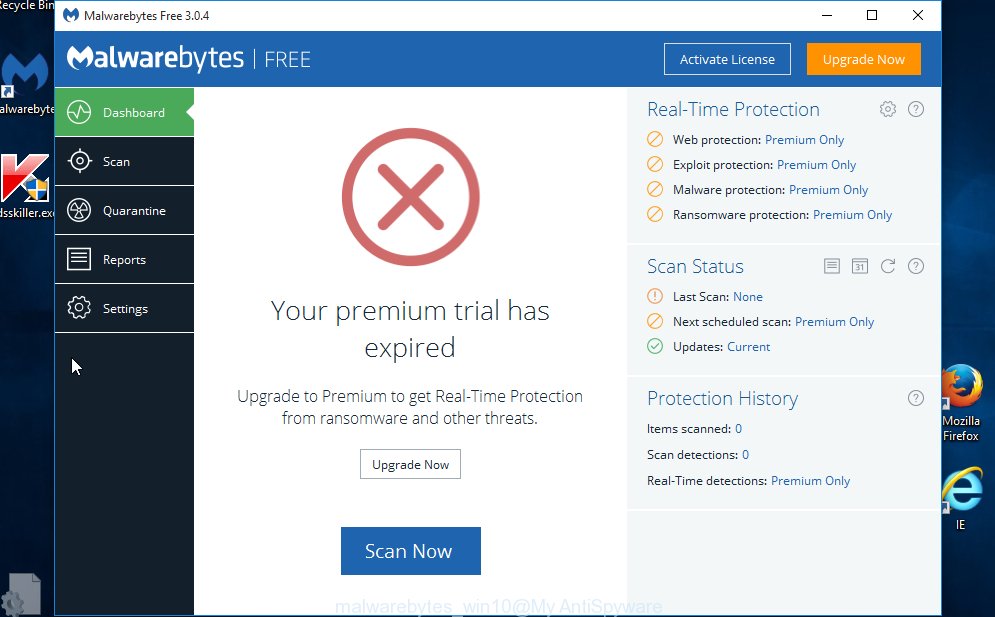
Next, click the “Scan Now” button to detect ad supported software responsible for redirecting your web browser to Xml.ppc.buzz site. This procedure may take some time, so please be patient.
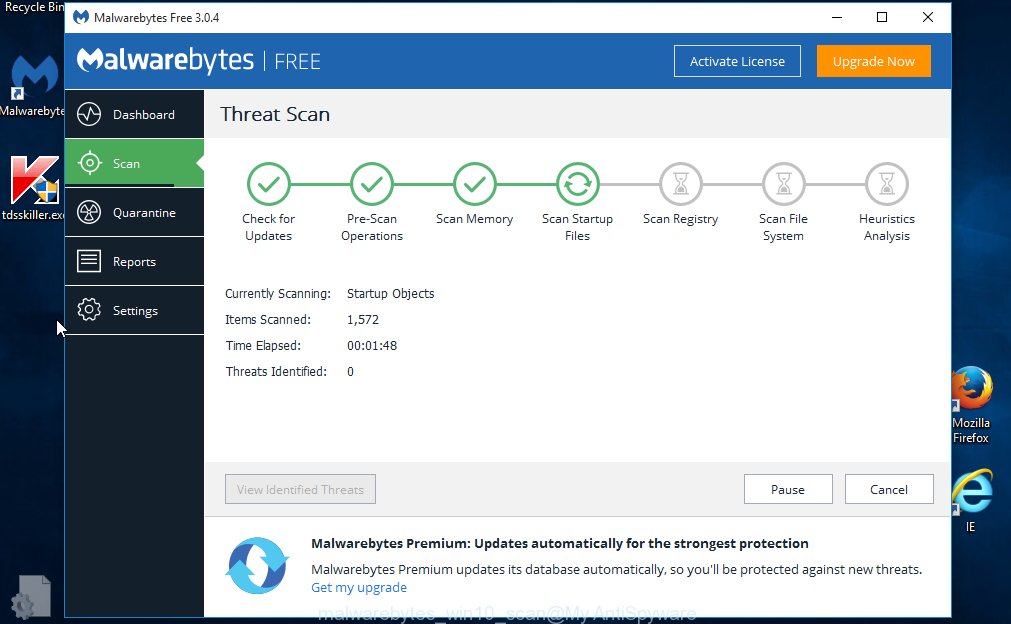
After that process is done, you can check all threats detected on your computer. Next, you need to click “Quarantine Selected” button.

The MalwareBytes AntiMalware (MBAM) will start to delete adware responsible for redirecting your browser to Xml.ppc.buzz web-page. When the process is done, you can be prompted to restart your computer. We suggest you look at the following video, which completely explains the procedure of using the MalwareBytes to remove browser hijackers, adware and other malicious software.
Run AdwCleaner to delete Xml.ppc.buzz popups from internet browser
AdwCleaner will help remove ad-supported software related to Xml.ppc.buzz advertisements that slow down your computer. The hijackers, ad-supported software and other potentially unwanted apps slow your browser down and try to mislead you into clicking on malicious ads and links. AdwCleaner removes the adware and lets you enjoy your PC system without Xml.ppc.buzz pop-up advertisements.
Visit the following page to download AdwCleaner. Save it directly to your Windows Desktop.
225535 downloads
Version: 8.4.1
Author: Xplode, MalwareBytes
Category: Security tools
Update: October 5, 2024
When the download is finished, open the file location. You will see an icon like below.
![]()
Double click the AdwCleaner desktop icon. After the tool is opened, you will see a screen as displayed on the screen below.
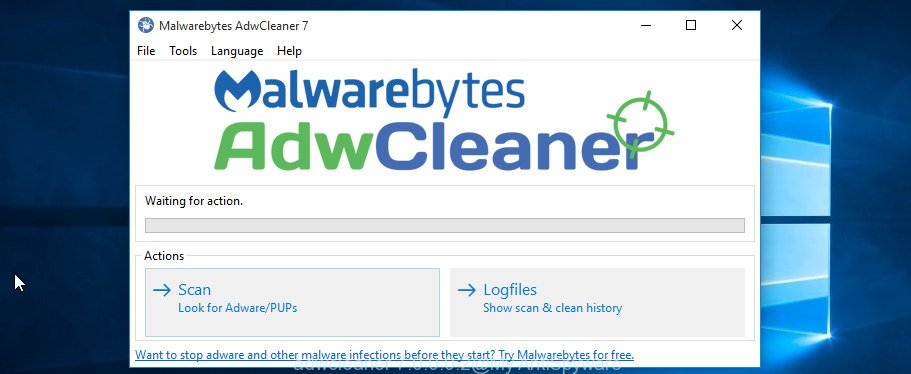
Further, click “Scan” button to search for ‘ad supported’ software that causes browsers to show undesired Xml.ppc.buzz popups. A scan may take anywhere from 10 to 30 minutes, depending on the count of files on your computer and the speed of your PC. After the scan get completed, you can check all items detected on your PC system as displayed on the screen below.
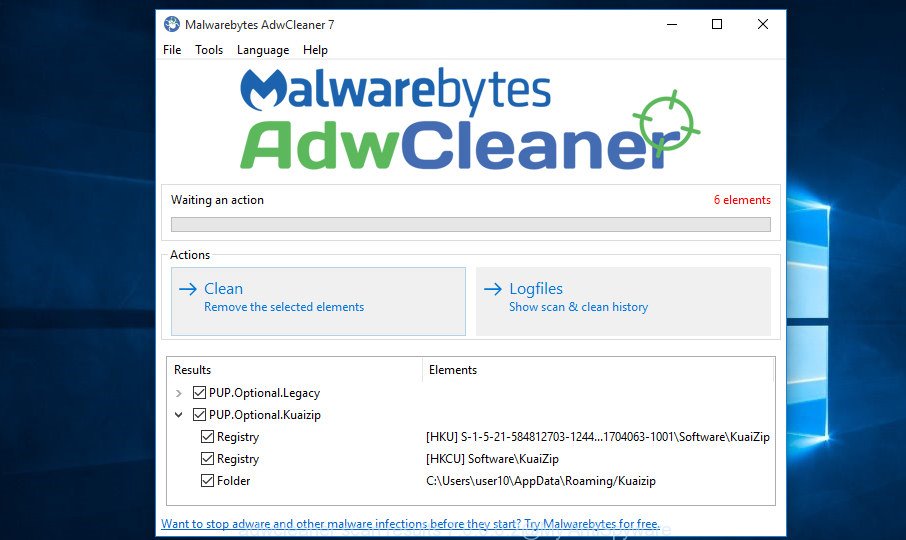
Review the scan results and then press “Clean” button. It will show a prompt as on the image below.
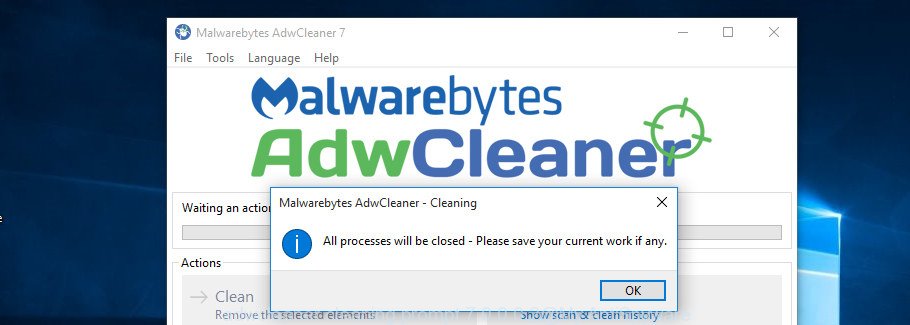
You need to click “OK”. After the cleaning procedure is finished, the AdwCleaner may ask you to reboot your computer. When your PC system is started, you will see an AdwCleaner log.
These steps are shown in detail in the following video guide.
Use AdBlocker to stop Xml.ppc.buzz and stay safe online
In order to increase your security and protect your machine against new intrusive ads and malicious web sites, you need to run ad blocker application that blocks an access to malicious ads and web pages. Moreover, the program can block the display of intrusive advertising, that also leads to faster loading of web pages and reduce the consumption of web traffic.
- Download AdGuard application by clicking on the link below. Save it on your Windows desktop or in any other place.
Adguard download
26839 downloads
Version: 6.4
Author: © Adguard
Category: Security tools
Update: November 15, 2018
- After the downloading process is done, start the downloaded file. You will see the “Setup Wizard” program window. Follow the prompts.
- When the installation is done, click “Skip” to close the installation program and use the default settings, or press “Get Started” to see an quick tutorial that will help you get to know AdGuard better.
- In most cases, the default settings are enough and you do not need to change anything. Each time, when you start your PC, AdGuard will run automatically and stop pop-ups, sites like Xml.ppc.buzz, as well as other harmful or misleading web-pages. For an overview of all the features of the program, or to change its settings you can simply double-click on the icon called AdGuard, which is located on your desktop.
Prevent Xml.ppc.buzz pop up ads from installing
In many cases the adware is bundled within various freeware, as a bonus. Therefore it’s very important at the stage of installing programs downloaded from the World Wide Web carefully review the Terms of use and the License agreement, as well as to always choose the Advanced, Custom or Manual install option. In this method, you can turn off all unwanted add-ons, including this adware, which will be installed along with the desired program. Of course, if you uninstall the free applications from your PC, the adware will not be removed automatically. Therefore, in order to get rid of Xml.ppc.buzz pop ups from the Microsoft Internet Explorer, Google Chrome, Firefox and Microsoft Edge you need to follow the few simple steps above.
Finish words
Now your computer should be free of the ad-supported software responsible for redirecting your web-browser to Xml.ppc.buzz web-site. Delete AdwCleaner. We suggest that you keep Zemana Anti Malware (ZAM) (to periodically scan your computer for new adwares and other malware) and AdGuard (to help you block annoying pop ups and malicious web-sites). Moreover, to prevent ‘ad supported’ softwares, please stay clear of unknown and third party applications, make sure that your antivirus application, turn on the option to scan for PUPs (potentially unwanted programs).
If you need more help with Xml.ppc.buzz popup ads related issues, go to our Spyware/Malware removal forum.




















